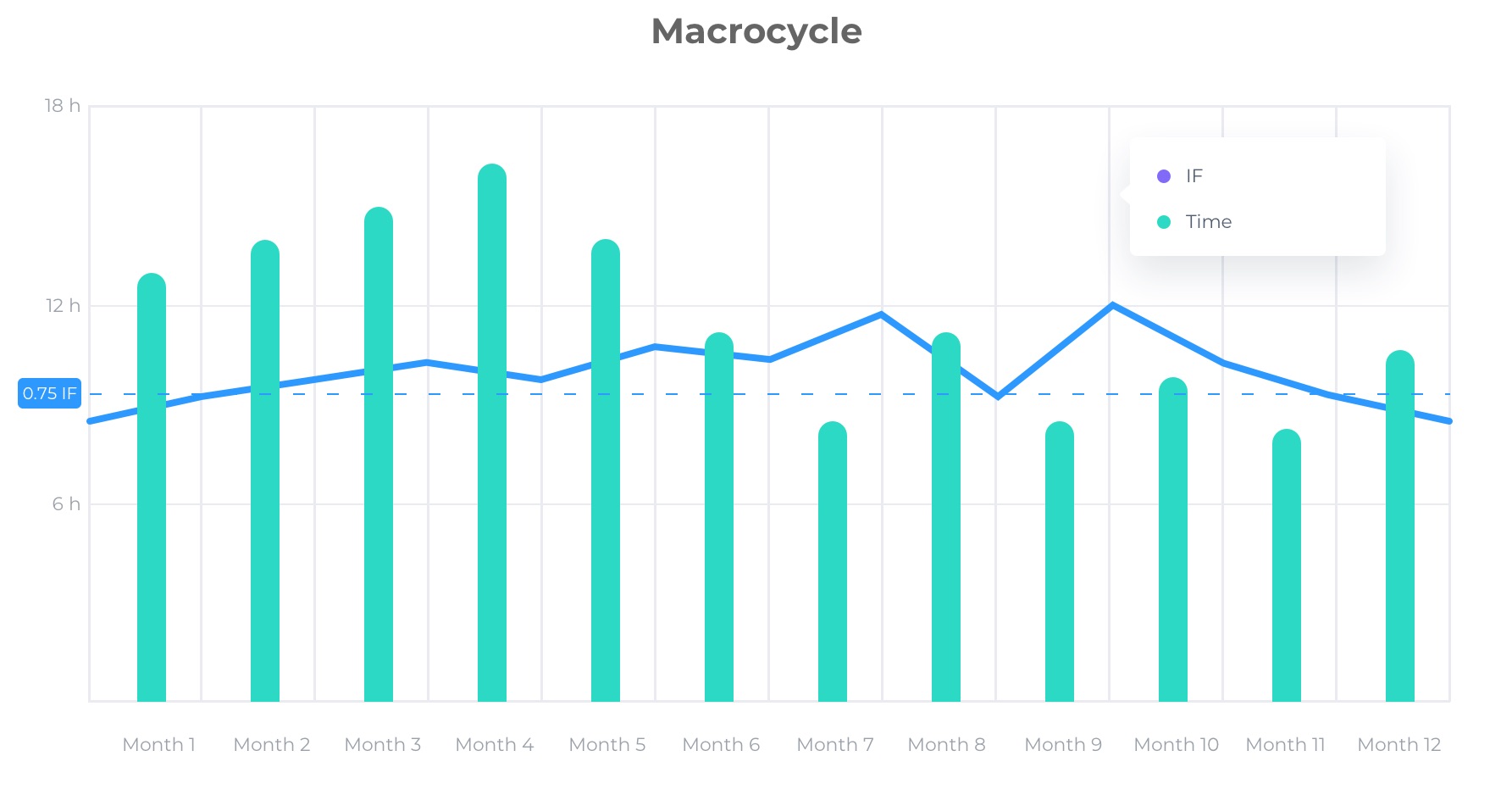Periodization in Cycling
1. What is Periodization?
2. Cycles of Periodization
2.1 Macrocycle
2.2 Mesocycle
2.3 Microcycle
3. Types of Periodization
4. Pros and Cons + Cheatsheet
1. What is Periodization in Cycling?
Periodization in training is changing the value, duration or intensity of workouts to increase the effectiveness of the training plan and for the development of the muscular and fitness system in your body.
Training can be described in 2 basic steps:
I. Stress:
This is a stage where you actually work out and put stress on your body and muscles. Amount of stress should be big enough so your body can develop after Stage II, and small enough so you can finish your workouts and follow a training plan.
II. Adaptation/Recovery:
Stage II needs to be long enough so you are able to do another unit of Stress (workout) in 100%, and short enough so you can adapt and get stronger.
That is where periodization comes, it helps us in managing Stress/Recovery balance in different periods of time.
2. Cycles of Periodization in Cycling?
We can designate 3 main periodization cycles: macrocycles, mesocycles, and microcycles.
All cycles together can let us build a training plan, which will include different parts of preparation for the season. Now, let’s focus on specific cycles.
2.1 Macrocycles:
could be called, annual plan. It is the biggest cycle which includes all parts of the season, preparation, competition, transition.
This cycle should be preparer, in the beginning, to give you a bigger picture for the whole season with mesocycles included into it as well as all events.
Macrocycle should be created based on previous seasons, hours that athlete can spend on training as well as TSS that needs to be done.
All adjustments should be made during the season in case of overtraining, injury, or sickness.
2.2 Mesocycles:
most of the time are from 2-6 weeks and it is more detailed phase focused on more specific work, like the base or build period where you focus on developing different energetic systems.
At this cycle you can see periodization more clearly, you should be implementing recovery every 2-3 weeks as you can see below.
 2.3 Microcycles:
2.3 Microcycles:
focus on individual weeks. Each week and each individual training should be described in detail.
A properly planned week should include training days as well as non-training days and especially focus on the balance between training load and recovery.
3. Types of Periodization
Now you have better understanding of periodization cycles and how to use them during the season.
But how actually use periodization and what are different types?
Most popular periodization in cycling is using 3-4 weeks periods.
Training plan, as well as periodization and training load, should be optimized for every athlete individually. Diagrams you can find at this article are very general and need to be adjusted to every cyclist separately.
But they will show you the concept of periodization in cycling as well as creating overall training plan for your needs.
3-weeks periodization
2 weeks of increasing volume and intensity, 1-week recovery about 75% of the first week.
 4-weeks periodization
4-weeks periodization
3 weeks of increasing volume and intensity, 1-week recovery about 85% of the first week.
 Block periodization
Block periodization
3-5 days of workouts in specific zones, 3-4 days full recovery.
4. Pros and Cons + Cheatsheet
+ Periodization is a must in creating every training plan,
+ 3 and 4-weeks periodization is the most common and safest method,
+ use periodization in longterm plans even 2,3,4 years ahead.
– A training plan should be optimized for every athlete individually,
– block periodization can be risky for no-experienced athletes,
– without periodization, your development will be limited.
FAQ
What are the cycles of periodization?
We can designate 3 main cycles of periodization: macrocycles, mesocycles, and microcycles.
All cycles together can help us build a training plan, which will include different parts of the season: preparation, competition, transition.











